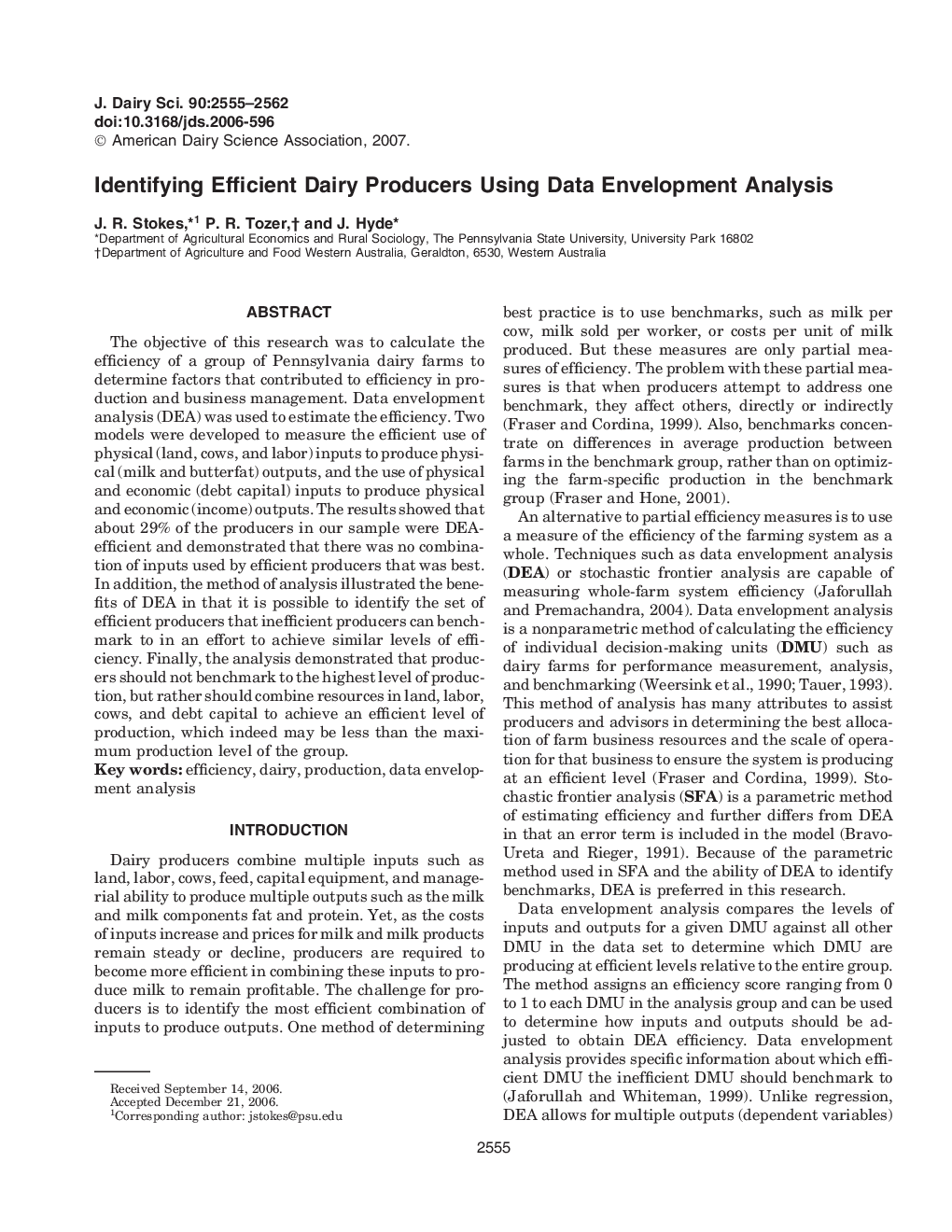| Article ID | Journal | Published Year | Pages | File Type |
|---|---|---|---|---|
| 2441187 | Journal of Dairy Science | 2007 | 8 Pages |
Abstract
The objective of this research was to calculate the efficiency of a group of Pennsylvania dairy farms to determine factors that contributed to efficiency in production and business management. Data envelopment analysis (DEA) was used to estimate the efficiency. Two models were developed to measure the efficient use of physical (land, cows, and labor) inputs to produce physical (milk and butterfat) outputs, and the use of physical and economic (debt capital) inputs to produce physical and economic (income) outputs. The results showed that about 29% of the producers in our sample were DEA-efficient and demonstrated that there was no combination of inputs used by efficient producers that was best. In addition, the method of analysis illustrated the benefits of DEA in that it is possible to identify the set of efficient producers that inefficient producers can benchmark to in an effort to achieve similar levels of efficiency. Finally, the analysis demonstrated that producers should not benchmark to the highest level of production, but rather should combine resources in land, labor, cows, and debt capital to achieve an efficient level of production, which indeed may be less than the maximum production level of the group.
Related Topics
Life Sciences
Agricultural and Biological Sciences
Animal Science and Zoology
Authors
J.R. Stokes, P.R. Tozer, J. Hyde,
